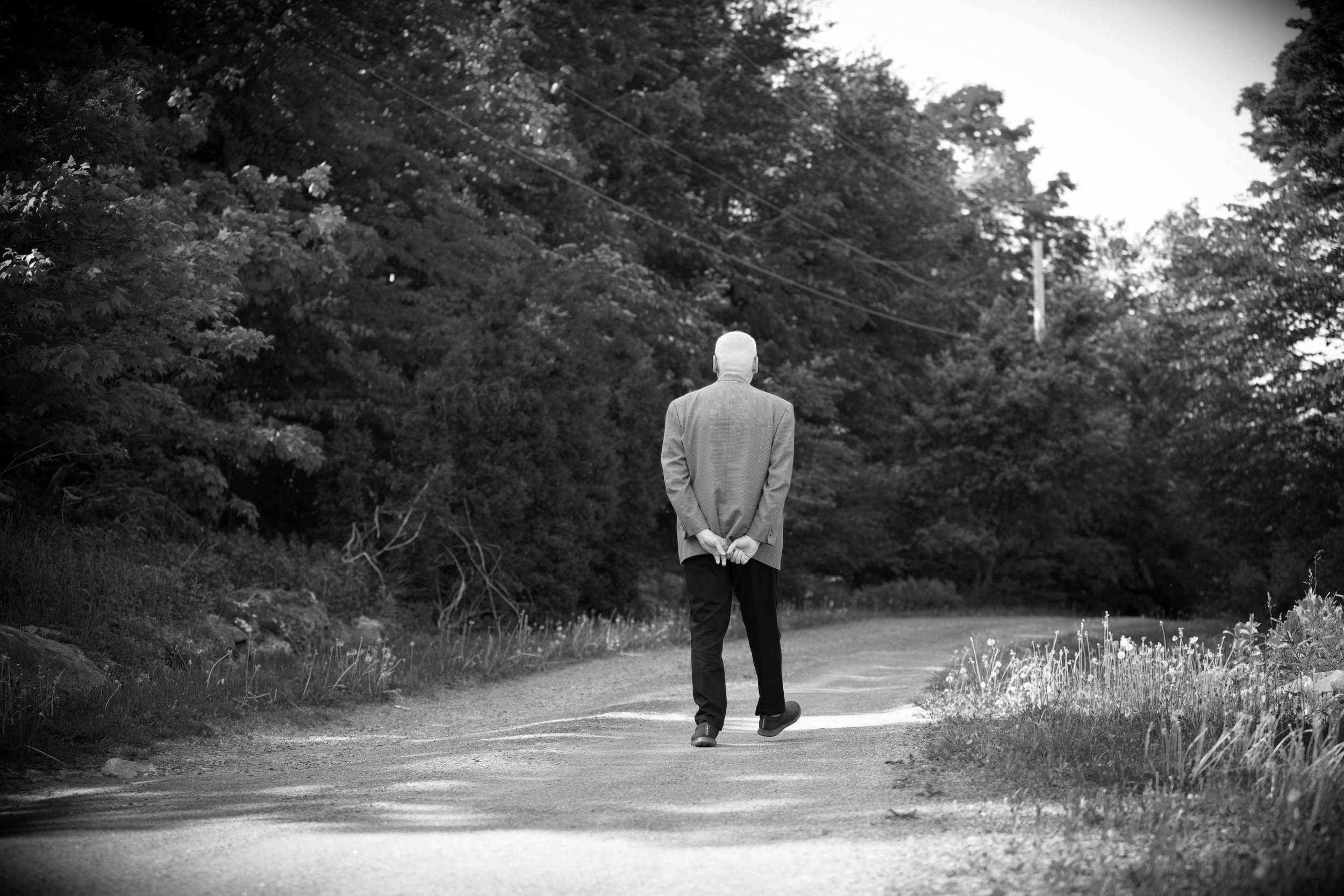
Welcome to my Blog
Thank you for stopping by. This space is where I share research, reflections, and practical tools drawn from my experience as a marriage and family therapist.
Are you a couple looking for clarity? A professional curious about the science of relationships? Or simply someone interested in how love and resilience work? I’m glad you’ve found your way here. I can help with that.
Each post is written with one goal in mind: to help you better understand yourself, your partner, and the hidden dynamics that shape human connection.
Grab a coffee (or a notebook), explore what speaks to you, and take what’s useful back into your life and relationships. And if a post sparks a question, or makes you realize you could use more support, I’d love to hear from you.
Be Well, Stay Kind, and Godspeed.
~Daniel
P.S.
Feel free to explore the categories below to find past blog posts on the topics that matter most to you. If you’re curious about attachment, navigating conflict, or strengthening intimacy, these archives are a great way to dive deeper into the research and insights that I’ve been sharing for years.
- Attachment Issues
- Coronavirus
- Couples Therapy
- Extramarital Affairs
- Family Life and Parenting
- How to Fight Fair
- Inlaws and Extended Families
- Intercultural Relationships
- Marriage and Mental Health
- Married Life & Intimate Relationships
- Neurodiverse Couples
- Separation & Divorce
- Signs of Trouble
- Social Media and Relationships
- What Happy Couples Know
Why Science-Based Couples Therapy Matters: The Dark History of Marriage Counseling
Folks sometimes ask me why science-based couples therapy is important.
They ask it casually, the way you might ask whether you really need car insurance or whether the smoke alarm is just being dramatic.
Let me be as clear as mid-century America was not:
Because the field began as a polite, televised disaster.
The 1950s were not the golden age of marriage; they were the golden age of men with clipboards and no credentials issuing decrees about women’s lives.
It was a decade that successfully turned gender ideology into therapeutic doctrine—an impressive feat, if you ignore the human cost.
To understand why evidence matters, you have to see what filled the vacuum before evidence existed.
Shu-Ha-Ri: The Japanese Path to Mastery—and What It Teaches Us About Couples Therapy
There’s a Japanese phrase that sounds like a meditation bell if you say it slowly: Shu-Ha-Ri (守 破 離) — Obey, Break, Transcend.
It began as a martial arts concept, a way to describe the disciplined path from imitation to mastery.
But it’s really about human development — how we learn, how we grow, and how we finally let go.
Every art has its version of this arc. The calligrapher who spends years copying her teacher’s brushstrokes until her wrist remembers what her mind forgets.
The Aikido student who repeats the same throw until the body starts thinking for itself.
The therapist who learns to listen so precisely that theory dissolves into intuition.
The couple who practices communication skills long enough that kindness becomes reflex.
America’s New Relationship with Marriage and Family Therapy
How preventive care, sibling therapy, and digital access are redefining the American family.
Once, therapy meant you’d failed at love.
Now, it’s how Americans learn to do it better.
Marriage and Family Therapy (MFT) used to be where you went after the damage was done.
Today it’s where you go before you make a mess.
Emotional triage has turned into emotional maintenance — the oil change for the human heart.
A couple told me recently they weren’t fighting; they were just tired of talking past each other. That’s the new American condition: not rage, not betrayal — just exhaustion.
We used to think love was self-cleaning. Now, we bring it in for service.
Is Intensive Couples Therapy Worth the Money?
Marriage retreats aren’t cheap, but studies suggest they may deliver faster, longer-lasting results than months of weekly sessions — if you’re brave enough to show up.
So you’re wondering if intensive couples therapy is worth the money. Fair question.
Spending thousands of dollars on a marriage retreat can feel like betting your relationship on a long weekend with a stranger in a cardigan.
Yet the truth is, weekly therapy often feels like driving with the parking brake on — steady progress, sure, but painfully slow.
Intensives, by contrast, promise a fast track: a weekend or week where you and your partner are locked in a room long enough to either rediscover your love… or your lawyer’s number.
And yes, the research suggests that these compressed sessions can work — sometimes spectacularly so.
What to Expect in Your First Couples Therapy Session (A Therapist Explains)
So you’ve booked your first couples therapy session.
Congratulations—you’ve just done one of the bravest and most grown-up things a couple can do (right up there with signing a joint Costco membership).
Now, naturally, you’re panicking. What actually happens when you walk into that office—or click that Zoom link? Will it be like marriage court with a referee in sensible shoes?
Will the therapist crown a winner? probably not.
Couples therapy isn’t a punishment. It’s more like a lab. A slightly awkward lab where the experiment is your relationship, and the scientist is taking notes on how you argue about loading the dishwasher.
Why Therapy Sometimes Can Save Relationships That Seem Hopeless
Hopelessness in marriage feels heavy, like winter that won’t end. You stop expecting warmth, stop checking the forecast.
Couples walk into therapy like that: sitting far apart on the couch, arms crossed, convinced the thaw will never come.
And yet — they showed up. That’s the tell.
If you were truly hopeless, you’d be in a lawyer’s office, not a therapist’s.
Even at the lowest point, some small ember of hope got you through the door.
Couples therapy’s job is to treat that ember like a pilot light: small, fragile, but capable of lighting the whole furnace again.
Modern American Couples Therapy: The History, Science, and the Future of Love
Love is glorious, irritating, necessary, and—at least in America—relentlessly self-examined.
We argue about dishes, whisper promises in bed, and occasionally threaten to pack a bag and live in the woods. Couples therapy is where all of this gets sorted out.
Once stigmatized as a last resort, it’s now an ordinary part of American life, as much about prevention as repair.
This guide traces the arc of American couples therapy: where it came from, what makes it unique, and why it matters in a country obsessed with both independence and intimacy.
Beyond the Boxes: Why Your Mental Health Is More Than a DSM Code
Someday, the Diagnostic and Statistical Manual of Mental Disorders will sit in a museum, next to a rotary phone and a butter churn.
The plaque will read: “Once believed to capture the human mind in tidy categories.”
Until then, we play along. Insurance companies demand DSM-5 categories. Schools want a formal mental health diagnosis before offering help.
The mental health system—like any bureaucracy—loves nice and easy paperwork.
But human beings nevah evah do anything nice and easy…
People Ask Me All the Time, and I'm Tired of Being Polite About It
They ask me at barbecues. In parking lots. Sometimes, in a whisper, after two glasses of wine at their child’s back-to-school night:
“So… what’s really the biggest problem you see in couples?”
There’s usually a nervous laugh, like they’re bracing for me to say “sex” and make it a punchline. A quick laugh, and then we’re back to potato salad.
But I’ve stopped giving the polite answer.
Because the real answer is quieter. Slower. And much more important.
The biggest problem I see in couples—the one that quietly wears love down—is this:
At some point, people stop being willing to be changed by the relationship.
When to Quit Couples Therapy (And When to Stay Anyway)
Let’s say the quiet part out loud.
Couples therapy is a strange ritual. You schedule your suffering in 50-minute blocks. You pay someone to ask hard questions.
You rehearse vulnerability, sometimes in the presence of someone who isn’t even making eye contact. And then you go home and argue about what was said—or what wasn’t.
It’s brave. It’s hopeful. But it’s also, at times, bewildering.
So when it doesn’t feel like it’s working—or worse, when it starts to feel like a weekly exercise in despair—you begin to wonder: Is this still worth it?
Let’s explore when it’s actually wise to quit couples therapy, and when the discomfort you’re feeling is exactly the thing you should be leaning into.
Why Couples Therapy Doesn’t Work for Some People
Couples therapy has a PR problem.
On Instagram, it’s all throw pillows, card decks, and holding hands on matching yoga mats. On Reddit, it’s stories of miraculous turnarounds:
“We went to three sessions, and he finally got it.”
Or: “She stopped bringing up 2017 after our therapist said I wasn't the villain.”
But let’s be honest. Sometimes it doesn’t work. Sometimes it’s 50 minutes of paid bickering, trauma-informed homework that nobody did, or one partner weaponizing every insight for rhetorical sport.
So: why does couples therapy fail?
Here’s the answer no marketing agency wants to give you:
because it’s not therapy that’s broken — it’s what we bring to it.
And often, what we bring has been shaped not just by childhood or trauma — but also, in part, by the particular psychodynamics of American culture.
Emotional Triangulation in Relationships: When the Third Isn’t an Affair
There’s a growing trend in couples therapy that highlights a subtle but powerful dynamic eroding intimacy: emotional triangulation.
Not the classic love triangle or secret affair, but the kind of triangulation that enters quietly through work, children, digital distractions, or even grief.
This emotional third isn’t a person.
It’s a force that takes up space in the relationship—drawing attention, emotional energy, and connection away from the couple.
Think: the demanding job that becomes a silent spouse, the child who mediates all communication, the phone that receives more eye contact than your partner.
Even therapy itself can become a third, deflecting intimacy rather than fostering it.












